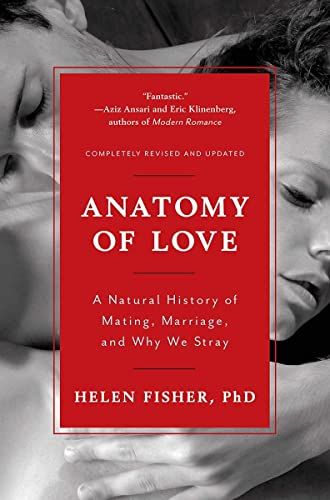The swirl of emotions and chemicals that runs through your body when your eyes land on someone you desire can send your head spinning. One minute you’re fully anchored on the ground—measured, calm, rational—the next you’re a helium balloon, floating into another stratosphere, wild with elation.
Only the poets (and psychoanalysts) truly know why one person moves us and another leaves us cold, but when it happens, its power—equal parts pleasure and pain—is undeniable. In one second flat, it can rob us of our clearheaded decision-making abilities and make us do crazy things.
Figuring out if it’s lust (a fleeting feeling) or love (a lasting one) can seem like an impossible challenge, so we asked world-renowned biological anthropologist Helen Fisher, PhD, author of Anatomy of Love, and the Gottman Institute’s Kimberly Panganiban, a licensed marriage and family therapist, to help us untangle the features of each feeling.
Fisher identifies three distinct brain systems for mating and reproduction to help illuminate what’s going on when our loins or hearts light up: (1) sex drive, (2) romantic love, and (3) attachment.
What Is Lust?
The feeling of lust is defined by a strong sense of sexual desire. While sex drive can overlap with romantic love, Fisher says, it does not depend on tender feelings or attachment. "It’s driven by testosterone in both men and women....You can feel it by yourself and for a whole array of people. It’s a basic craving for sex,” she says.
What Is Romantic Love?
When your physical attraction turns into cinematic scenes of walks along sandy shores, bed-and-breakfast stays in quaint American towns, and interminable conversations about who loves who more, you’ve now dived into a sea of dopamine, the neurotransmitter responsible for pleasure, and you’re in romantic love.
“It gives you feelings of elation, giddiness, euphoria,” Fisher says, emphasizing that romantic love is much more complicated than lust. “It’s the stuff of myths, legends, songs, dances, plays, symphonies, ballets, holidays, and a whole constellation of feelings,” she continues. This stage can be just as deceiving as blind lust, Panganiban adds: “In this stage, we don’t see red flags, or we do, but we ignore or justify them. We think everything is great and wonderful and this person is our soul mate.”
What Is Romantic Attachment?
As the technicolor projections of your partner fade and you can finally see them as a separate entity from yourself, a quieter, steadier, truer iteration of love takes shape–this is where attachment comes into play. This phase of your relationship is “run by the oxytocin system, which gives you a sense of calm and cosmic union,” Fisher says.
But when our bodies stop releasing an excess of these feel-good hormones, we begin to see things more clearly. “You start to have a more realistic picture of who this person is and who you are in this relationship,” Panganiban explains. “The newness and excitement has worn off, and you’re settling into the relationship. You start seeing differences and issues come up. You might start to wonder, Who else is out there? Can I do better?” That can be the first nail on the coffin of your coupledom, but Panganiban says, couples can choose to see and accept each other’s differences: “They’ll say, ‘Okay, we’re going to have difficulties in this relationship, but I’m still choosing you.”
Whichever stage you’re in, loving (in all its permutations) is wonderful ride and a skilled teacher at every turn.
This content is imported from OpenWeb. You may be able to find the same content in another format, or you may be able to find more information, at their web site.
"Love" - Google News
March 18, 2022 at 04:02AM
https://ift.tt/SgDxRsM
Lust Versus Love - How to Distinguish Between Lust and Love - Oprah Mag
"Love" - Google News
https://ift.tt/Ww4KHvD
https://ift.tt/av52ByH
Bagikan Berita Ini















0 Response to "Lust Versus Love - How to Distinguish Between Lust and Love - Oprah Mag"
Post a Comment